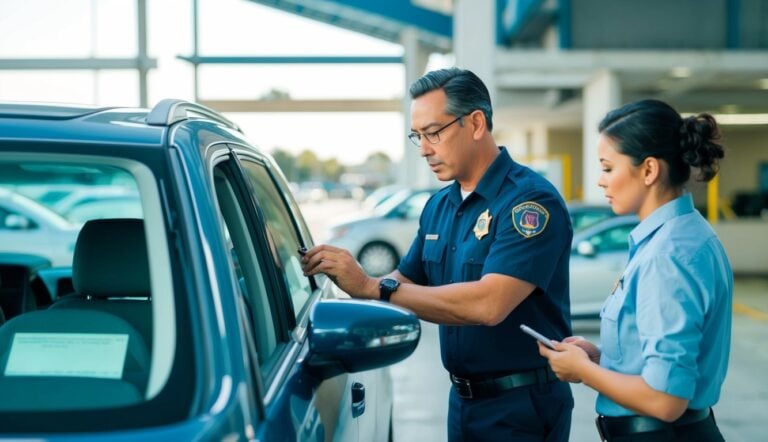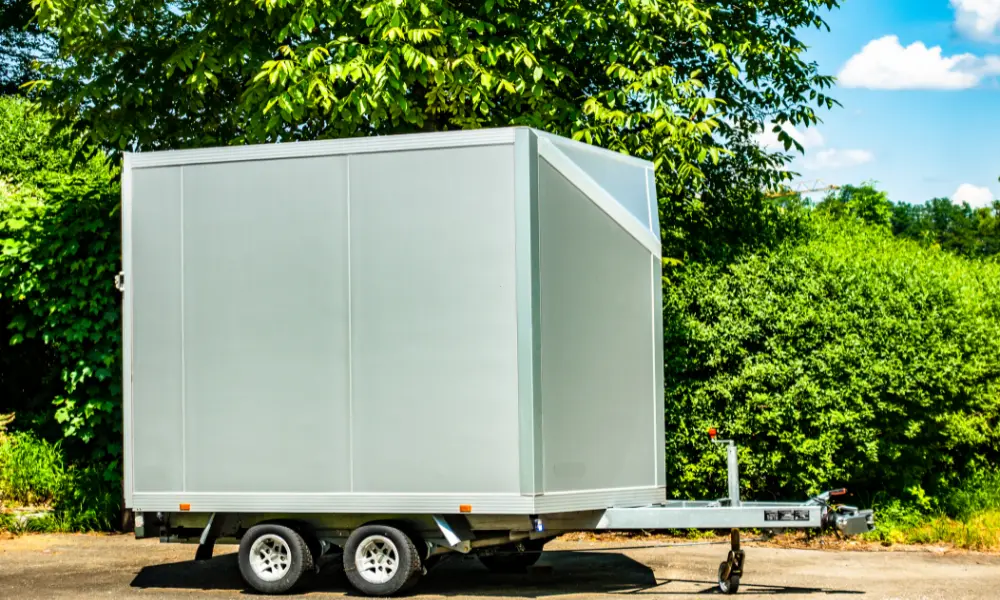Getting your vehicle registered in California can be a breeze if you know what’s needed. You’ll often need a smog inspection to ensure your car meets the state’s emissions standards. Sometimes, a vehicle verification might also be required. Curious about the specific steps and requirements? Keep reading to find out everything you need to know to keep your car compliant and on the road.
Overview of California Vehicle Inspection Requirements
California requires regular vehicle safety inspections to ensure road safety and compliance with state laws. These requirements vary depending on vehicle type and include a series of checks by licensed technicians.
Basis of California Inspection Requirements
California’s vehicle inspection requirements are based on legal standards aimed at maintaining road safety. The California Code of Regulations outlines specific criteria. These involve checks on brakes, lamps, and other essential safety systems. Inspections have to be carried out only by licensed technicians at certified stations to ensure the highest standards are met.
Types of Vehicles Subject to Inspection
Different types of vehicles are subject to specific inspection requirements. Common types include passenger vehicles, commercial vehicles, and specialty vehicles such as tractors and tow trucks. Each category has tailored criteria. For instance, the Bureau of Automotive Repair states that commercial vehicles often need more frequent inspections due to their usage and size.
Key Terms and Definitions
Understanding key terms helps clarify the process. Vehicle Safety Systems Technician refers to licensed professionals who perform inspections. Vehicle Safety Systems Inspection Manual details the inspection procedures, as seen in the manual. Certificate of Compliance is the document you receive once your vehicle passes the inspection, proving it meets all legal requirements.
Registration and Inspection Process
In California, registering your vehicle and ensuring it meets safety standards involve several steps. These include the initial registration, renewing your registration, VIN inspection, and mandatory smog checks.
Initial Vehicle Registration
When you first register a vehicle in California, you’ll need to visit the DMV. Bring proof of ownership, such as the title and a bill of sale. Additionally, provide proof of insurance and proof of your identity.
New residents should complete registration within 20 days of establishing residency. If your vehicle was registered out of state, a physical inspection may be necessary. Make sure your vehicle passes the required smog inspection.
Registration Renewal
Renewing your vehicle registration must be done annually. You will receive a renewal notice by mail or email, and you can complete the process online, by mail, or at a DMV office.
To renew, ensure you have a valid smog certificate if required. If your vehicle needs a smog check, complete this before attempting to renew. You will also need proof of insurance and payment for any fees.
VIN Inspection Procedures
A Vehicle Identification Number (VIN) inspection may be required if you are registering a previously junked or out-of-state vehicle. This involves verifying the VIN to ensure it matches DMV records.
The inspection checks the VIN on various parts of the vehicle, such as the dashboard and engine bay. Usually, this process is done at a DMV office or by a certified VIN verifier. If your vehicle does not pass the VIN inspection, take corrective steps before attempting to register.
Understanding the Smog Check Program
California requires most vehicles to pass a smog check every two years. This check reduces air pollution by ensuring your vehicle’s emissions are within acceptable levels.
Some vehicles are exempt from smog checks. These include electric cars, gasoline-powered vehicles from model year 1975 or older, and diesel-powered vehicles from model year 1997 or older. Always check if your vehicle needs a smog inspection. If your vehicle fails, you’ll need to fix the problem before you can complete the registration.
Inspection Criteria and Procedures
California vehicle inspection requirements ensure that all vehicles on the road are safe and environmentally friendly. This section covers smog inspections, diesel vehicle checks, emissions standards, and safety inspections.
Smog Inspections for Gasoline-Powered Vehicles
Smog inspections are critical for gasoline-powered vehicles. These checks measure the pollutants your car emits. If your vehicle is six years old or newer, you might be exempt from these inspections, but you’ll need to pay a $20 smog abatement fee each year.
Inspection stations use the On-Board Diagnostics (OBD) to read the vehicle’s computer. The test looks for issues with the engine, transmission, fuel system, and other components that might affect emissions. It’s a way to make sure your car doesn’t emit more than allowed. If your vehicle fails the inspection, repairs are needed to pass the test.
Diesel-Powered Vehicle Inspections
If you own a diesel-powered vehicle, you have different inspection requirements. Diesel vehicles undergo tests that focus on smoke emissions, especially if they are heavy-duty models.
Vehicles more than 14,000 pounds must pass the annual smoke opacity test. The test measures the density of the smoke from the exhaust, ensuring it meets state standards. Like gasoline vehicles, diesel engines are checked through their OBD systems for issues affecting emissions.
For lighter diesel vehicles, inspections are similar to gasoline tests but with added checks specific to diesel engines. Your diesel car must meet specific standards, or you will need to have it serviced.
Emissions Standards and Tests
California has strict emissions standards for both gasoline and diesel vehicles. The state uses the Federal Test Procedure (FTP) to check emission levels. This test ensures that cars do not emit excessive amounts of nitrogen oxides (NOx), carbon monoxide (CO), hydrocarbons (HC), and other pollutants.
These standards are in place to reduce air pollution and improve public health. Vehicles must also pass inspections on the Evaporative Emission Control System (EVAP), which prevents fuel vapors from escaping into the atmosphere.
Technicians at licensed inspection stations will use specific machines to conduct these tests. If your vehicle does not pass, it might need repairs or adjustments to meet the required standards.
Safety Inspections
Safety inspections cover various aspects of your vehicle to ensure it is roadworthy. A licensed vehicle safety systems technician will check your brakes, tires, lights, windshield wipers, and other safety features.
Technicians follow detailed procedures in the Vehicle Safety Systems Inspection Manual to conduct these checks. They ensure your vehicle has no critical defects that could lead to accidents.
Beyond mechanical components, safety inspections also review structural parts like the chassis and frame. Damage to these parts might make your vehicle unsafe to drive. Regular safety inspections help maintain your vehicle’s reliability and your safety on the road.
Exemptions and Exceptions
In California, not all vehicles need to undergo smog inspections. Certain new vehicles, those in specific areas, and vintage or collector cars have various exemptions.
New Vehicle Exceptions
If you have a vehicle that is six years old or newer, you don’t need to get it smog-checked. Instead, you pay an annual smog abatement fee. Electric vehicles are also exempt from smog checks.
Gasoline-powered cars older than 1975 and diesel vehicles older than 1997 or weighing over 14,000 lbs are also exempt. This rule includes trucks and trailers that fit these categories. For new vehicles, this makes the registration process simpler and quicker.
Specific Area Exemptions
Certain areas in California, like Riverside, have different rules for smog checks. If your vehicle is in one of these regions, you might get an exemption. Areas with excellent air quality often have more relaxed requirements.
For example, if your natural gas-powered vehicle weighs over 14,000 lbs, it might still be exempt due to local regulations. Ensure you check local DMV guidelines to see if your area qualifies for these exemptions.
Vintage and Collector Vehicle Exemptions
Vintage cars, especially those older than 1975, enjoy special exemptions under California law. This includes classic cars, motorcycles, and trailers that are gasoline-powered.
Many collector vehicles are also exempt because they are typically driven less and kept in pristine condition. These cars often only need minimal modification to remain legal for occasional use. Keeping these vehicles exempt honors their historical value without compromising air quality.
Fees and Financial Assistance
Understanding the costs and available aid for vehicle inspections in California can help you better manage your budget. Here’s what you need to know about fees and financial assistance options.
Inspection and Registration Fees
When you bring your car for an inspection, you can expect to pay between $30 and $70. This cost varies based on your vehicle’s size. Regular inspections are required every two years in California. Remember, failing to comply with inspection laws can result in fines and registration denial. Be sure to keep your vehicle in good condition to avoid additional penalties.
Consumer Assistance Program (CAP)
The Consumer Assistance Program (CAP), managed by the Bureau of Automotive Repair (BAR), offers financial aid to those struggling with inspection costs. If your vehicle fails the biennial Smog Check, you might be eligible for repair assistance at a STAR test-and-repair station. This program aims to help you cover emissions-related repairs, easing the financial burden on low-income families.
Smog Abatement Fee
If your vehicle is new and less than eight model years old, you won’t need a Smog Check right away. Instead, you pay a Smog Abatement Fee, which is typically $25. This fee allows you to skip the initial smog certification while ensuring your vehicle still contributes to state environmental efforts. Once your car hits the nine-year mark, you’ll be back to the regular biennial inspection schedule.
After The Inspection
Once your vehicle inspection is done, you’ll receive the results on a vehicle inspection report (VIR). Knowing what to do next is crucial, whether your car passes or needs repairs.
Passing the Inspection
If your vehicle passes the inspection, you will receive a certificate of compliance. This certificate shows that your car meets all safety and emissions standards.
Keep this document in a safe place. You may need it for vehicle registration or insurance purposes. You should also maintain regular check-ups to avoid future issues. Routine maintenance, such as oil changes and tire rotations, helps ensure your vehicle stays in good condition.
If Your Vehicle Fails
If your vehicle fails the inspection, don’t worry. The VIR will detail why your car didn’t pass. Common reasons include issues with emissions, brakes, or lights.
You will need to fix the problems identified during the inspection. The VIR helps by specifying what needs repair. Understanding these issues can help you decide whether to fix the car yourself or take it to a professional.
Repair and Retest Procedures
Once you know what repairs your vehicle needs, you can choose a certified repair shop. These shops have the expertise and equipment required to fix the issues. After completing the repairs, you’ll need a retest.
The retest ensures all problems identified have been addressed. If the retest is successful, you will then receive a certificate of compliance. Make sure to ask for a detailed report of the repairs for your records. This can help in future inspections and maintenance tasks.
For smog certification, some shops offer both repairs and retests. This can save you time and ensure your vehicle is ready to go back on the road. Check if your mechanic offers these combined services when planning your repair and retest.















